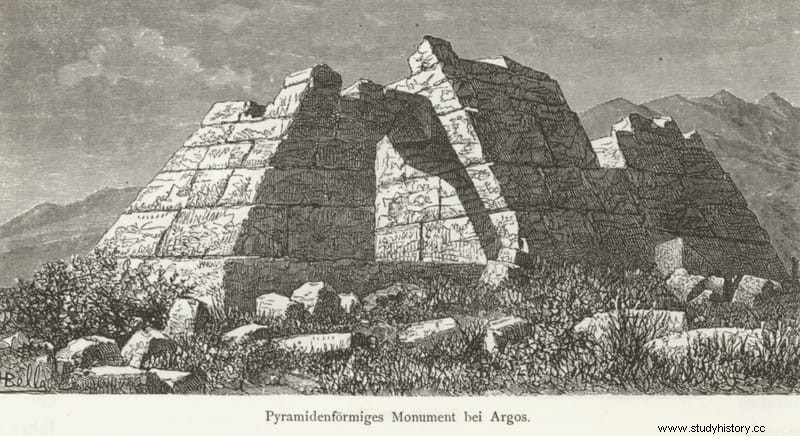When talking about pyramids outside of Egypt, Sudan or Mexico, the matter is usually taken with skepticism. And on many occasions justified, such as the unique case of the alleged Bosnian pyramids.
But the truth is that there are pyramids in Europe , specifically in Greece , already documented by the geographer Pausanias in the 2nd century AD
They are the Pyramids of the Argolis , several structures scattered throughout that Greek region, of which two are still standing, one in Hellenikon and the other in Ligurio , near the archaeological site of Epidaurus.

However, the two mentioned by Pausanias no longer exist. One states that it was located about 20 kilometers southwest of Hellenikon, and that it was the tomb of soldiers killed in a legendary battle for the throne of Argos.
The other, whose location is not very clear, would also be a tomb of soldiers killed in a battle fought around 669 BC. Pausanias says that both structures were shaped like pyramids.
As we said, of the two that remain standing, the most famous is the Pyramid of Hellenikon. It is located southeast of the Argolis, close to the Erasinos River and the road that used to go from Argos to Tegea in ancient times. Its base is just 7.03 by 9.07 meters and its outer walls rise at an angle of 60 degrees to 3.5 meters high. From there, the walls are vertical, to support the floor of the building. The entire monument is made of gray limestone from the area, with large blocks arranged in a trapezoidal polygonal system.

It was first excavated and investigated by Theodor Wiegand in the first decades of the 20th century. In 1937, the American School of Archeology in Athens concluded that both pyramids were surveillance structures, capable of housing a small garrison that controlled the environment protected behind its walls.
In Hellenikon ceramic objects dating from the Proto-Helladic period II (between 2800 and 2500 BC) and others from the later classical and Roman times, as well as buried funerary monuments, were found. The researchers also found that the main entrance is oriented in the direction that Orion's Belt appeared between 2000-2400 BC.
The analysis of the materials in the 90s of the 20th century by Ioannis Liritzis's team gave construction dates between 3000 and 660 BC ., a time arc that would overlap with the rise of the pyramids in Egypt , and could even make them older. But this dating has been strongly criticized later, due to the unreliability of the methods used, since some of the stones analyzed could have been reused from previous structures. In 2011 Liritzis published an article in which he reaffirmed his conclusions.
Today it seems that the investigations are at a standstill, so the date of its construction remains a mystery.
